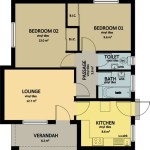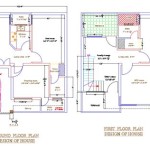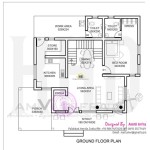How To Plan a House Build
Building a house is a significant undertaking, demanding meticulous planning, careful execution, and a knack for managing numerous moving parts. From conceptualization to completion, the journey necessitates a well-defined roadmap to ensure a smooth and successful outcome. This article delves into the core aspects of planning a house build, providing a comprehensive guide to navigate the complexities of this ambitious project.
1. Define Your Needs and Budget
The foundation of any successful building project lies in a clear understanding of your requirements and financial constraints. Begin by meticulously defining your needs. Consider the size of your family, desired living spaces, lifestyle preferences, and any specific features you envision. Once you have a clear picture of what you want, it's crucial to establish a realistic budget. Research average construction costs in your area, factor in potential contingencies, and allocate funds for permits, inspections, and unexpected expenses. It's essential to remember that the budget can fluctuate based on material selection, design complexity, and unforeseen challenges. By establishing a firm understanding of your needs and setting realistic financial boundaries, you lay the groundwork for a sustainable and achievable building project.
2. Secure Financing and Land
With your needs and budget defined, securing financing and finding the ideal piece of land become the next crucial steps. Explore various loan options from banks or mortgage lenders, comparing interest rates, terms, and requirements. A pre-approval for a mortgage can demonstrate your financial readiness to builders and sellers. Simultaneously, embark on a thorough search for land that meets your requirements. Consider factors like zoning regulations, proximity to amenities, soil conditions, and environmental considerations. Secure a land contract or purchase agreement once you've identified a suitable location. Engaging a real estate agent familiar with the local market can simplify the process and provide valuable insights.
3. Design and Planning
Once the financial foundation and land acquisition are secured, the exciting phase of design and planning begins. Hiring an architect or draftsperson experienced in residential construction is highly recommended. Collaborate with your chosen professional to translate your vision into detailed blueprints. Consider incorporating these elements in your design plan:
- Floor Plan: Define the layout of each floor, including living spaces, bedrooms, bathrooms, and any other rooms you require.
- Elevations: Create visual representations of the exterior facades, showcasing the style, materials, and architectural features.
- Sections: Develop cross-sectional drawings to illustrate the building's structural elements and internal spaces.
- Details: Include specifications for windows, doors, stairs, and other components, ensuring accurate construction.
- Building Codes: Ensure your design complies with local building regulations and safety standards.
During this phase, it's essential to engage your chosen builder or contractor. Discuss the design, material selections, and construction methods. Their expertise can help refine the plans and ensure feasibility.
4. Obtain Permits and Inspections
After obtaining a detailed design and collaborating with your builder, it's time to navigate the bureaucratic hurdles of permits and inspections. Contact your local building department to understand the specific requirements for your project. Common permits include:
- Building Permit: Authorizes construction based on approved plans.
- Electrical Permit: Permits the installation of electrical wiring, appliances, and fixtures.
- Plumbing Permit: Allows for the installation of plumbing systems and fixtures.
- Mechanical Permit: Authorizes the installation of HVAC systems and other mechanical equipment.
Throughout the building process, inspections by qualified officials will be conducted at various stages. These ensure compliance with regulations and safety standards.
5. Choose Your Builder and Construction Team
Selecting a reputable and experienced builder or general contractor is paramount for a successful house build. Seek recommendations from trusted sources, review online reviews, and request references from potential candidates. Interview several contractors to gauge their experience, communication skills, and understanding of your vision. Ensure the contractor has the necessary licenses, insurance, and a proven track record. Furthermore, consider assembling a team of skilled subcontractors for specialized tasks. This might include:
- Electricians: Install wiring, fixtures, and electrical systems.
- Plumbers: Install plumbing systems, fixtures, and drainage.
- HVAC Technicians: Install and maintain heating, ventilation, and air conditioning systems.
- Landscapers: Design and install landscaping features, such as lawns, patios, and gardens.
6. Material Selection and Procurement
With the design finalized and the construction team assembled, it's time to select and procure materials. Consult with your builder and architect to determine the best options based on your budget, design aesthetic, and performance requirements. Collaborate on choices for:
- Exterior Cladding: Consider materials like brick, siding, stone, or stucco.
- Roofing: Select a roofing material suitable for your region's climate and aesthetic preferences, such as shingles, metal, or tile.
- Windows and Doors: Choose styles, materials, and energy efficiency levels that align with your design and budget.
- Flooring: Select materials like hardwood, tile, carpet, or laminate for different areas of the house.
- Kitchen and Bathroom Fixtures: Choose cabinets, countertops, sinks, and appliances based on your aesthetic preferences and budget.
It's advisable to source materials from reputable suppliers and manufacturers to ensure quality and timely delivery.
7. Project Management and Communication
Maintaining effective communication and managing the project is essential throughout the construction process. Schedule regular meetings with your builder and subcontractors to discuss progress, address any challenges, and make necessary adjustments. Establish a clear chain of command for decision-making and ensure all parties are informed about changes, delays, or potential issues.
Utilize a comprehensive project management system to track deadlines, budgets, and materials. Regular inspections of the building site can ensure adherence to design plans and prevent potential problems.
8. Completion and Handover
Once the construction phase is complete, a final inspection will be conducted to ensure compliance with building codes and safety standards. After any necessary corrections and adjustments, the building is formally handed over to you, the owner. At this stage, you can begin decorating and furnishing your new home.
Planning a house build is a journey marked by careful consideration, collaboration, and unwavering attention to detail. The process demands patience, flexibility, and a commitment to meticulous execution. By adhering to these fundamental principles, you can lay the foundation for a successful and rewarding building experience.

Easy To Build Houses And Floor Plans Houseplans Blog Com

House Plans How To Design Your Home Plan

5 Tips To Build Your Dream Home And Stay On Budget Dfd House Plans Blog

Floor Plans Types Symbols Examples

Affordable House Plans Our Est To Build Blog Homeplans Com

Est House Plans To Build Simple With Style Blog Eplans Com

The House Plans Build A Step By

Floor Plans Types Symbols Examples

Est House Plans To Build Simple With Style Blog Eplans Com

You Ve Decided To Build A House Now What The Designers








